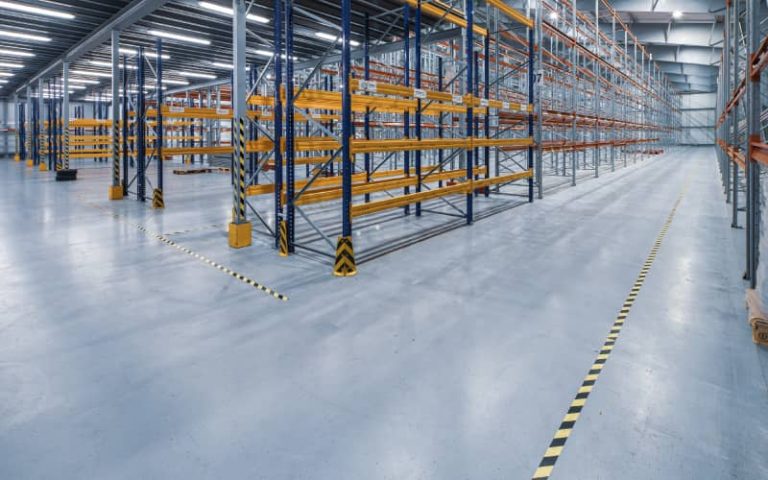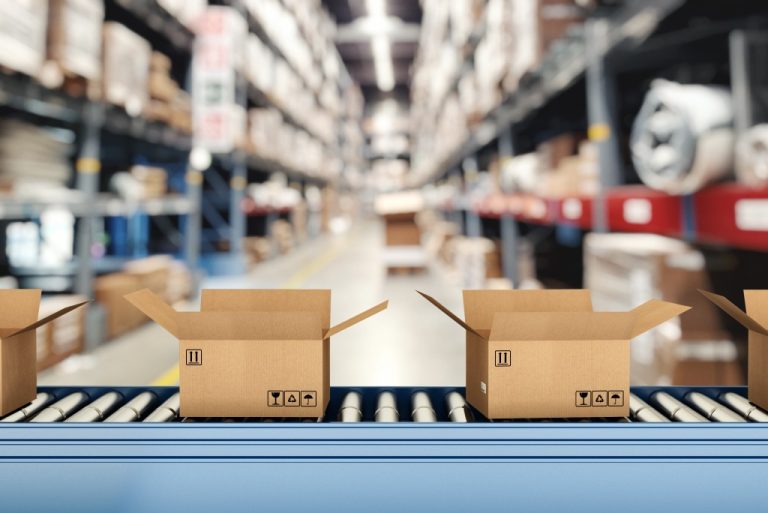As Jake slept, his dream turned to his workplace. As a warehouse manager, he was tasked with ensuring everything ran smoothly, but tonight, it was turning into a nightmare. Pickers were wandering aimlessly, unable to find inventory to fulfill orders. Forklifts were crisscrossing the warehouse, moving down aisles that were a bit too narrow and barely avoiding pedestrian accidents.
At the loading dock, trucks wait for backed-up shipments that aren’t getting out on time.
Everyone is frustrated, and some are getting angry.
While this may be a nightmare for Jake, warehouse setup mistakes often make these conditions a reality. While Jake’s situation might be an exaggeration, you may wonder how things could go so wrong. Unfortunately, a poorly configured warehouse can create chaos and cost you time and money, and it starts with failing to account for the warehouse setup requirements that create an optimal workspace.
6 Key Warehouse Setup Mistakes to Avoid
With decades of experience planning, engineering, and configuring warehouses, we learned a few things about designing optimal workflow. Here are six of the most common mistakes we see.
1. Where Problems Start: Receiving
A common oversight in warehouse setup is underestimating the importance of the receiving area. Many managers, in an attempt to maximize storage space, allocate minimal room for receiving operations. This can lead to a host of problems downstream.
Consider a scenario where a large shipment arrives, but there isn’t sufficient space to properly inspect and sort the items. Workers are forced to rush through the receiving process, increasing the likelihood of errors. These mistakes then ripple through the entire warehouse operation, affecting inventory accuracy, order fulfillment, and ultimately, customer satisfaction.
Ensure your receiving area has ample space for all necessary activities, including quality control, labeling, and staging. Well-organized receiving sets the stage for smooth warehouse operations.
2. Inefficient Picking Paths
Poor picking paths only add to your biggest expense item: labor. The more time it takes for pickers to locate stock and move it to packing and shipping, the more expensive it is. The right material handling equipment and layout will go a long way in reducing your labor costs and improving your ROI.
You also need to arrange your inventory in a logical sequence to avoid workers zig-zagging across the warehouse. Zone picking or batch picking are popular approaches to improving picking paths, but they often start with the layout and design. This is another example of how warehouse setup mistakes can create inefficiency.
3. Neglecting Forward Locations
Forward pick areas are often neglected, but designing a warehouse setup so that your most popular items are within easy reach will dramatically reduce travel time. This is especially important for high-velocity products. Moving them closer to packing and shipping can help improve workflow and accelerate fulfillment.
Dedicated pick modules with automation can also streamline your picking process.
4. Failing to Plan for Growth or Change
Warehouses often grow or evolve over time. If you do not build flexibility into your plan, it is often difficult (and expensive) to change. When setting up your warehouse, you want to plan for potential expansion and reconfiguration. It helps to design modular storage systems that can be reworked and scaled as needed.
Flexibility enables you to handle challenges as they arise and adapt to changing conditions.
5. Not Dealing with Dead Stock and Returns Efficiently
Another common mistake is integrating dead stock with active inventory. This consumes valuable space and can create errors in fulfillment. It’s better to dedicate an area for dead stock and returns and implement processes for handling them. This frees up space and prevents returned items from being reshipped without review.
6. Poor Implementation of Technology
Combining the right pallet racking with conveyors, robotics, AS/RS systems, lifts and machines, and other automation can create significant efficiencies. However, some warehouse operators forget that equipment should enhance good warehouse practices.
Warehouse setup mistakes often include failing to account for the human element. You may need additional training and reconfiguration of your warehouse to realize the full benefits. Reviewing your layouts, processes, and workflow is an essential part of adding automation.
Avoid Warehouse Setup Mistakes
The warehouse efficiency experts at Conesco Storage Systems are experienced warehouse design, planning, and engineering consultants. We can provide turnkey services from design to project management and installation with deep expertise in efficient configurations.
Our consultants can help you customize your space for peak efficiency, and our engineers can provide the stamped documents you need for permitting. We can provide the labor for installs, teardowns, reconfigurations, and moves to meet your warehouse setup requirements.
Avoid warehouse setup mistakes. Call the experts at Conesco Storage Systems at (303) 690-9591 today or request a free consultation.



